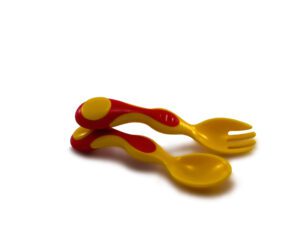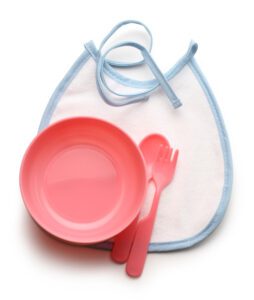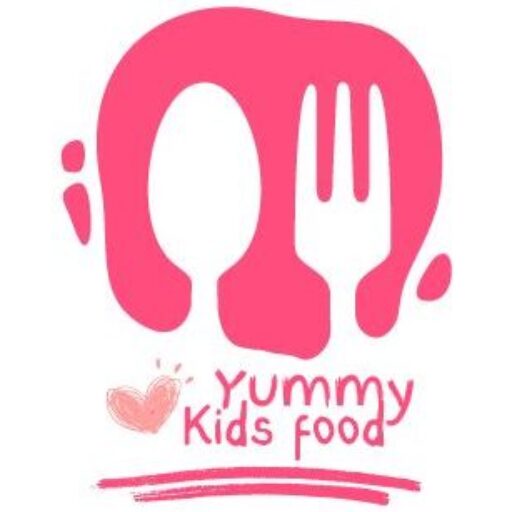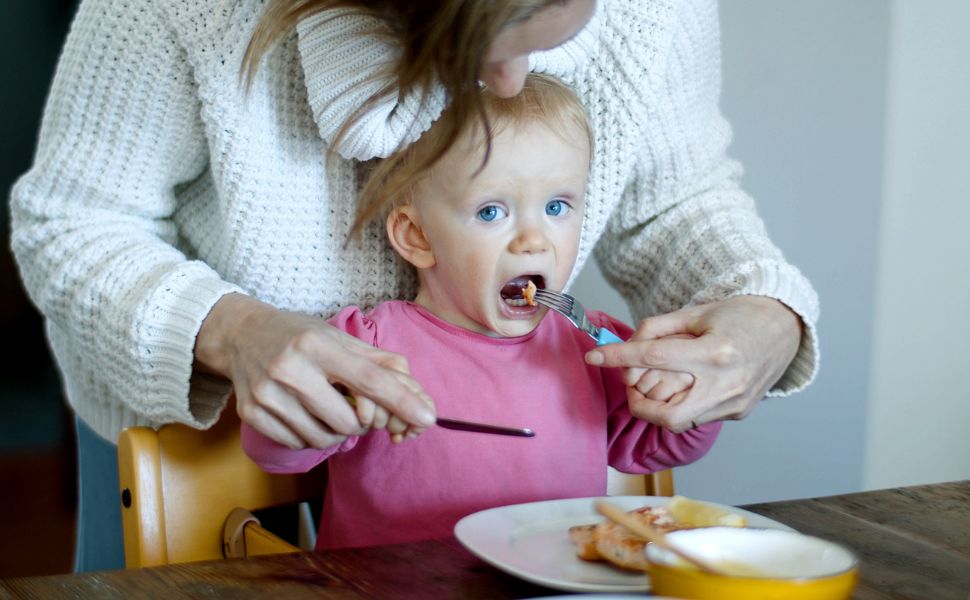As your little one embarks on their journey into self-feeding, finding the best utensils becomes crucial. Best toddler fork can make mealtime more manageable and encourage your baby’s independence. In this article, we will explore some of the best toddler fork available for babies, considering factors such as safety, ease of use, and durability.
Baby-Led Weaning (BLW) is a popular approach to introducing solid foods to infants, allowing them to self-feed and explore a variety of textures and flavors from an early age. As parents embark on this exciting journey, it’s important to provide the right tools to support their child’s self-feeding skills. Among these tools, best toddler fork plays a vital role in helping little ones learn to eat independently while developing their fine motor skills.
Choosing the best fork for babies can enhance their self-feeding journey and make mealtime more enjoyable. The Grabease First Self-Feeding Fork and Spoon Set, Munchkin 6-Piece Fork and Spoon Set, NUK Gerber Graduates Rest Easy Spoons, NumNum Pre-Spoon Gootensil, and OXO Tot On-the-Go Fork are all excellent options to consider. Remember to prioritize safety, ease of use, and durability when selecting a best toddler fork. Ultimately, finding the utensil that suits your little one’s needs and promotes their self-feeding skills will make mealtime a breeze.

Table of Contents
Best toddler fork
- Grab-ease First Self-Feeding Fork and Spoon Set: The Grab-ease First Self-Feeding Fork and Spoon Set is specifically designed for babies learning to feed themselves. These utensils feature short, ergonomic handles that are easy for tiny hands to grip. The choke protection barrier prevents your baby from inserting the utensil too far into their mouths, enhancing safety. Made from BPA-free, phthalate-free, and lead-free materials, these forks are safe for your little one and are dishwasher-safe for easy cleaning.
- Munchkin 6-Piece Fork and Spoon Set: The Munchkin 6-Piece Fork and Spoon Set is another popular choice for introducing utensils to your baby. These forks have rounded tines that are gentle on gums and teeth. The ergonomic handles are designed for small hands to hold comfortably, promoting self-feeding skills. Made from durable stainless steel, they are dishwasher-safe and can withstand repeated use.
- NUK Gerber Graduates Rest Easy Spoons: While not a traditional fork, the NUK Gerber Graduates Rest Easy Spoons are a fantastic option for babies transitioning from purees to more textured foods. These spoons feature a unique design with a built-in support ledge that keeps the spoon elevated, preventing messy spills and reducing frustration. The spoon’s soft tip is gentle on your baby’s delicate gums. They are made from BPA-free materials and are dishwasher-safe for easy cleanup.
- NumNum Pre-Spoon Gootensil: The NumNum Pre-Spoon Gootensil is a innovative utensil designed to help babies develop their self-feeding skills. These flat-tipped spoons provide a safer alternative to traditional forks for early self-feeding stages. The dual-stage design includes a Stage One Gootensil for beginners and a Stage Two Gootensil for more advanced self-feeding. These utensils are made from FDA-grade silicone and are dishwasher-safe.
- OXO Tot On-the-Go Fork: The OXO Tot On-the-Go Fork is a convenient and portable option for meals on the move. This compact fork has a compact size that’s perfect for little hands and is great for traveling or dining out. The fork tines are rounded for safety, and the durable stainless steel construction ensures longevity. The included travel case keeps the fork clean and hygienic during transport.
Other BLW tips
- Best bibs for BLW – Know the recommended bibs available for babies and toddlers.
- BLW and choking – Know the safety signs while introducing BLW.
- BLW signs of readiness

FAQs – Best fork for babies
When can I introduce fork to my baby BLW?
When it comes to introducing a best fork for babies during Baby-Led Weaning (BLW), it’s important to consider their developmental readiness and motor skills. While each baby develops at their own pace, here are some general guidelines to keep in mind:
- Readiness signs: Your baby should be showing signs of readiness for self-feeding before introducing a fork. These signs include being able to sit up with minimal support, having good hand-eye coordination, and showing an interest in picking up and exploring food.
- Fine motor skills: Your baby needs to have developed the fine motor skills required to grasp and manipulate a fork. This typically happens around 8 to 10 months of age, but it can vary. Look for signs that your baby can hold and pick up objects with their thumb and forefinger (pincer grasp).
- Hand-eye coordination: Your baby should have developed enough hand-eye coordination to bring the fork to their mouth accurately. This skill helps prevent accidental poking or injury.
- Introduction after exploring finger foods: It’s generally recommended to introduce forks after your baby has had experience with finger foods and has become proficient at self-feeding using their hands. This allows them to focus on learning to use a best toddler fork without feeling frustrated by the new utensil.
When you decide to introduce a fork, choose best toddler fork that is age-appropriate, safe, and easy to hold for your little one’s small hands. Start by offering the fork alongside finger foods, allowing your baby to practice picking up food with the fork or experimenting with stabbing soft foods. Keep in mind that initially, they may use their hands more than the fork, and that’s perfectly normal. Over time, with practice and encouragement, they will develop their skills.
Always supervise your baby closely during mealtimes and ensure the fork you choose is safe, with rounded or blunted tines to minimize the risk of injury. Remember that BLW is about promoting self-feeding and exploration, so allow your baby to progress at their own pace and enjoy the process of discovering food independently.
What spoons are best for baby led weaning?
When it comes to selecting spoons for Baby-Led Weaning (BLW), there are a few factors to consider, such as safety, ease of use, and functionality. Here are some of the best spoons for BLW:
- Soft Silicone Spoons: Soft silicone spoons are a popular choice for BLW because they are gentle on your baby’s gums and teeth. They are flexible, making it easier for your baby to scoop up food and navigate their mouth while learning to self-feed. Look for spoons that are BPA-free and dishwasher-safe for convenience.
- Long-Handled Spoons: Long-handled spoons are beneficial for BLW as they allow your baby to hold and control the spoon independently. The extended handle gives them a better grip and helps with hand-to-mouth coordination. Opt for spoons with textured handles for improved grip.
- Flat-Edged Spoons: Spoons with a flat edge or a shallow bowl can be helpful for your baby to scoop up food more easily during self-feeding. The flat surface of the spoon assists in scooping food from the plate or tray without excessive spillage.
- Grabease Self-Feeding Utensils: Grabease makes self-feeding utensils specifically designed for infants who are transitioning to solid foods. These spoons have short, chunky handles that are easy for babies to hold. They also feature a choke barrier to prevent the spoon from going too far into your baby’s mouth, ensuring safety.
- OXO Tot Training Spoon Set: OXO Tot offers a training spoon set that is ideal for BLW. These spoons have a soft, silicone coating that is gentle on your baby’s gums. The handles are contoured for a comfortable grip and are designed to be easy for little hands to hold.
- NumNum Pre-Spoon GOOtensils: While primarily known for their forks, NumNum also offers pre-spoon GOOtensils that can be used for BLW. These spoons have a flat head design and are made from soft silicone. They promote self-feeding and help your baby learn how to use a spoon effectively.
Remember, the most important aspect of choosing a spoon for BLW is to ensure it is safe for your baby. Look for spoons made from food-grade materials, free from harmful chemicals, and easy to clean. Additionally, consider your baby’s comfort and their ability to grasp and manipulate the spoon. Ultimately, every baby is different, so observe your child’s preferences and adapt accordingly to make their self-feeding journey a successful and enjoyable one.
Do you use utensils for baby led weaning?
In the context of BLW, it is common for parents to introduce utensils to their babies once they show signs of readiness and the development of fine motor skills. The use of utensils during BLW is meant to promote self-feeding and independence in babies as they explore and consume solid foods. It is important to choose utensils that are safe, appropriate for the baby’s age and development, and easy for them to hold and manipulate.
What age should a toddler use a fork?
Toddlers typically begin to show interest in using best fork for babies between 12 and 18 months of age. However, every child develops at their own pace, so this timeline can vary. It’s important to look for signs of readiness and motor skill development before introducing best fork for babies. These signs include:
- Hand-eye coordination: Your toddler should be able to coordinate their hand movements with their visual focus, allowing them to guide the fork accurately from the plate to their mouth.
- Fine motor skills: Your toddler should have developed the dexterity and control required to hold and manipulate a fork. This includes the ability to grip the handle and coordinate movements to stab or scoop food.
- Self-feeding skills: Your toddler should have experience with finger foods and be able to pick up small pieces of food with their fingers. This demonstrates their readiness to progress to using utensils like a fork.
Once you observe these signs of readiness, you can begin introducing a best toddler fork to your toddler during mealtimes. Initially, they may use their hands more than the fork, and that’s okay. Encourage them to explore and experiment with the fork, offering guidance and support as needed. Over time, with practice and encouragement, they will develop their fork skills and become more proficient in self-feeding with it.

Can you combine spoon feeding and BLW?
Yes, it is absolutely possible to combine spoon feeding and Baby-Led Weaning (BLW) techniques. Many parents find it beneficial to incorporate both approaches to provide a well-rounded feeding experience for their baby. Here are some considerations and strategies for combining spoon feeding and BLW:
- Introduction to texture: BLW emphasizes introducing a variety of textures early on, allowing babies to explore and self-feed. You can still offer purees or mashed foods on a spoon as part of the introduction to solid foods. Gradually increase the texture and thickness of the purees to encourage your baby to practice chewing and swallowing.
- Offer finger foods alongside spoon feeding: Along with offering purees or mashed foods on a spoon, provide appropriate finger foods that are soft and easily graspable by your baby. This allows them to practice self-feeding and develop their fine motor skills. You can offer small pieces of soft fruits, cooked vegetables, or other suitable foods that your baby can pick up and eat independently.
- Encourage self-feeding with a spoon: As your baby develops their motor skills, you can introduce a pre-loaded spoon and encourage them to feed themselves. Place a small amount of food on the spoon and offer it to your baby, allowing them to bring the spoon to their mouth. This promotes self-feeding and independence while still incorporating the use of a spoon.
- Gradual transition: As your baby becomes more proficient in self-feeding, you can gradually reduce the amount of spoon feeding and increase the emphasis on self-feeding with finger foods. You can continue to offer spoon-fed meals or snacks, but also provide a variety of finger foods for your baby to explore and eat independently.
- Follow your baby’s cues: Pay attention to your baby’s cues and preferences during mealtimes. Some babies may prefer self-feeding with finger foods, while others may enjoy the combination of spoon feeding and self-feeding. Let your baby take the lead and respect their appetite and readiness for different feeding methods.
Remember that the ultimate goal is to provide a positive and enjoyable feeding experience for your baby. By combining spoon feeding and BLW techniques, you can support their development and encourage a healthy relationship with food.

